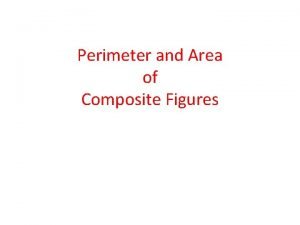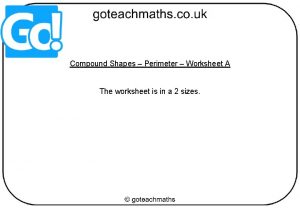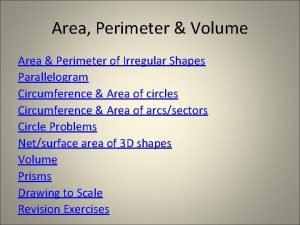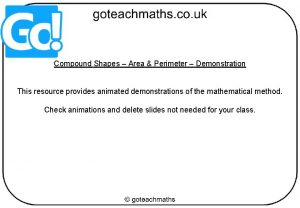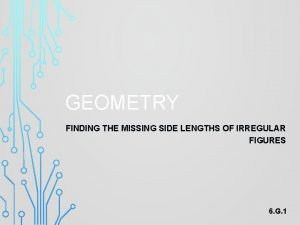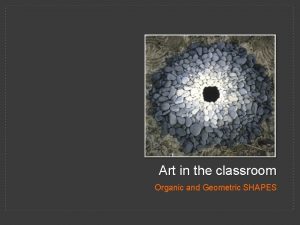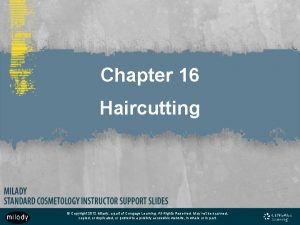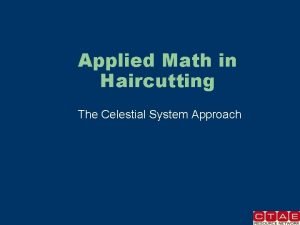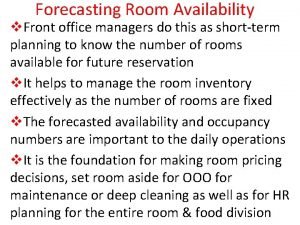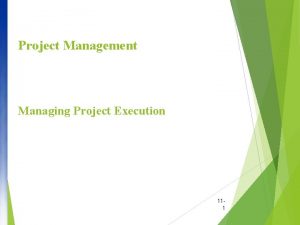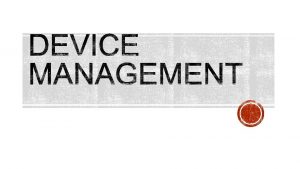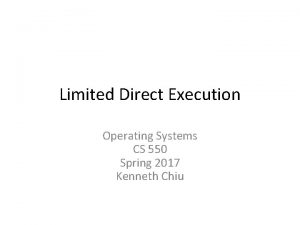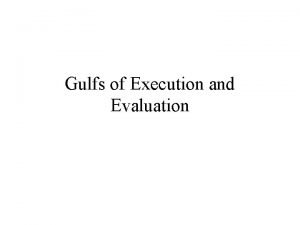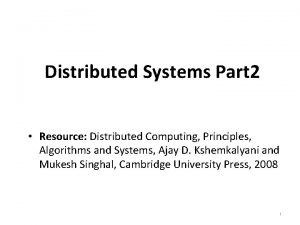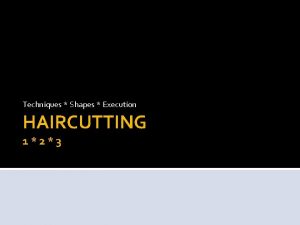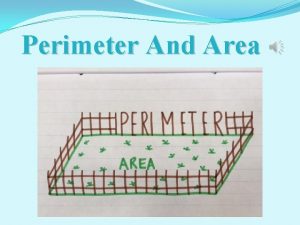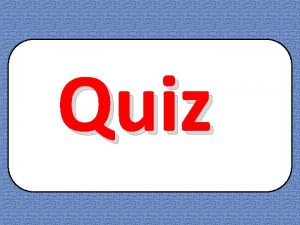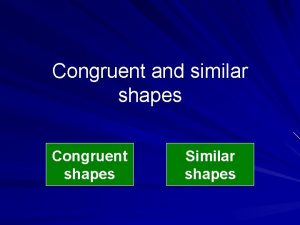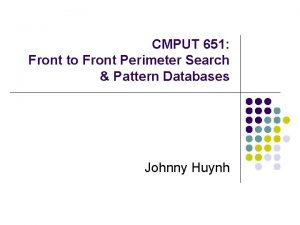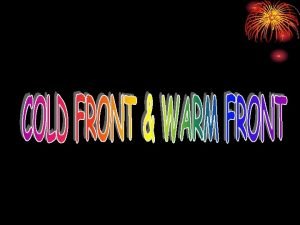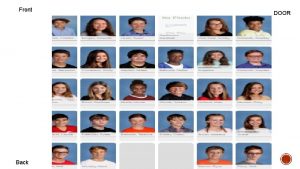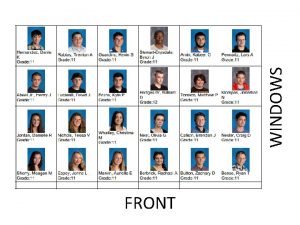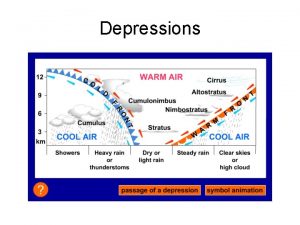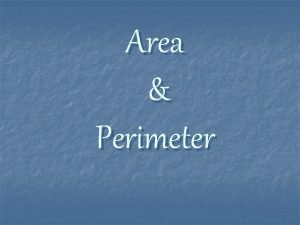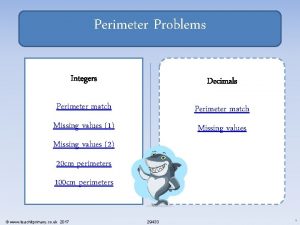Techniques Shapes Execution HAIRCUTTING 123 Terminology Front Perimeter
























- Slides: 24

Techniques * Shapes * Execution HAIRCUTTING 1*2*3

Terminology Front Perimeter - Front hairline Back Perimeter - Back hairline Side Perimeter - Side hairline Crown - Area at the top of the head Nape - Area in the lower back of the head Parietal Ridge - Forms the sides and the top of the head, the ridge is the area at the top of the bone Recession - Area on the side of the hairline that recedes towards the back Elevation - Hair lifted off of the base (up or down) Overdirection - any section of the hair that is moved horizontally or vertically away from its original base Weight - the heaviest part of the hair cut. Weight creates shape or form in the hair cut. Sections - Divisions of a hair made before cutting Subsections - divides the sections into manageable amount of hair for the purpose of control Partings - the line used to establish a section 2

Women’s Haircutting Techniques Blunt/One Length Heaviest Form (What) Elevation: 0 Degrees (How) PURPOSE: Build/Create Strong Perimeter Lines (Why) Lines Used to Create: Diagonal, Horizontal Builds Weight (What) Elevation: 1 – 89 Degrees (How) PURPOSE: Used to Build Foundation Within a Haircut (Why) Lines Used to Create: Diagonal, Horizontal, Vertical ***Note: Graduation is primarily placed occipital bone down; but can move up the head. Removes Weight (What) Elevation: 90 – 180 Degrees (How) PURPOSE: Creates Movement Lines Used to Create: Diagonal, Horizontal, Vertical Graduation Layers All 3 of your basic haircutting techniques are achieved through ELEVATION!!!!!!!

BLUNT HAIRCUT

GRADUATED HAIRCUT

LAYERED HAIRCUT

R*E*V*I*E*W “What” it does…. Blunt Technique – Will produce the heaviest form. Graduated Technique – Will produce a visual build up of weight. Layered Technique – Will remove weight. “Why” do we do it? Blunt Technique – To Build Strong Exterior/Interior Lines Graduated Technique – To Build a Foundation in your Haircut Layered Technique – To create movement.

PANELS by definition are used for control and design in haircutting. In school you learn how to “Section & Sub-Section” hair in order to keep the hair in an orderly fashion. Panels will be utilized in advanced haircutting and will teach you the art of creativity and how to build a haircut with “Foundation/Shape/Design” There are primarily 3 Panels to every haircut; however some may have more than 3 depending on the complexity of the haircut. ▪ PANEL 1 – The “Outline” of your haircut. This is where your perimeter is created. You can utilize all cutting techniques in this Panel. ▪ PANEL 2 – The “Shape” of your haircut. This is where your shape and the majority of your weight is placed in the haircut. You use this panel to flatten or enhance your shape. All techniques are utilized in this Panel. ▪ PANEL 3 – The “Design/Free Range” of your haircut. This is the creative part of your haircut comes from. Connection or Disconnection can occur and techniques vary. Primarily the Blunt and Layered techniques are used in this Panel.

SHAPES Along with every haircutting there is a shape. Some examples are: Square Round Concave Asymmetrical Convex

SQUARE Shapes Square Exterior/Interior Square Exterior

ROUND Shapes Short Round Layers Long Round Layers

CONCAVE Shapes Concave Graduation Concave One Length

ASYMMETRICAL Shapes Long Blunt Short Graduated

CONVEX Shapes

“HOW” Do You Do It? MASTER HAIRCUTTING EXECUTE TECHNIQUES & SHAPES Achieved By: Elevation Overdirection Design Lines Partings

HOW TO EXAMPLES***** Round Long Layers Technique: Layers Shape: Round ▪ Achieved Thru: Pie Sections / Follow Round of Head Concave Layers Technique: Layers Shape: Concave ▪ Achieved Thru: Overdirection / Elevation 180 Long Layers Technique: Layers Shape: Square ▪ Achieved Thru: Elevation 180

NOW YOU DO IT!!!!!! For the haircuts listed below list the technique & shape that would be executed to achieve this look: ▪ Inverted Bob

Continue. . . ▪ Classic Bob 18

Continue. . . ▪ Pixie Cut 19

Continue. . . ▪ Wedge 20

ANSWERS Inverted Bob Technique: Graduation/Layers Shape: Concave Achieved Through Diagonal Lines Classic Bob Technique: Blunt Shape: Square Achieved Through Horizontal Lines Pixie Cut Technique: Layers Shape: Round Achieved Through Following Round of Head Wedge Technique: Graduation Shape: Convex Achieved Through Diagonal Partings

TOOLS & BODY POSITION There are various tools that are used during haircutting, in which each perform a different function: Shear – Creates strong shapes, clean lines & facets. Razor – Softer effects that destructs shapes and creates texture. Thinning Shears – Used to blend lines, create texture & remove weight. Clippers – Used to create close tapers and haircuts that are closer to the head. Edgers – Used to clean up hairlines and detail work. Cutting Comb – Teeth spacing varies with density of hair. Proper selection is essential for adequate tension.

HAIR DESIGN LINES Horizontal Heaviest Form Creates Square Shapes Vertical Lightest Form Used for Graduated & Layered Techniques Diagonal Used for Blending Creates Concave & Asymmetrical Shapes Curved Used to Create Circular & Parabolic Shapes

PARADIGM SHIFT A paradigm shift has occurred here today and you will begin your journey to become a “master” stylist…… Focus & Master The Basic Techniques Become a Master Stylist Practice & Apply Principles At School
 Find the perimeter and the area of the figure.
Find the perimeter and the area of the figure. Perimeter of rectilinear shapes
Perimeter of rectilinear shapes Perimeter of compound shapes
Perimeter of compound shapes Finding perimeter and area of irregular shapes
Finding perimeter and area of irregular shapes Perimeter of shapes
Perimeter of shapes How do you find the missing side length
How do you find the missing side length Organic and geometric shapes
Organic and geometric shapes Haircuts that generally have less weight
Haircuts that generally have less weight 45 degree haircut milady
45 degree haircut milady Celestial axis hair
Celestial axis hair Dead front vs live front transformer
Dead front vs live front transformer Warm front simple definition
Warm front simple definition How to make school magazine cover page
How to make school magazine cover page Room availability formula
Room availability formula Fonctions techniques et solutions techniques
Fonctions techniques et solutions techniques The secrets to successful strategy execution
The secrets to successful strategy execution Execution defects
Execution defects Vision without execution is hallucination
Vision without execution is hallucination 111 project
111 project Asp.net execution model
Asp.net execution model In this scheme cpu execution waits while i/o proceeds.
In this scheme cpu execution waits while i/o proceeds. Code execution ia-32 ia-64
Code execution ia-32 ia-64 Limited direct execution protocol
Limited direct execution protocol Gulf of execution and evaluation
Gulf of execution and evaluation Design fifo and non fifo execution
Design fifo and non fifo execution
